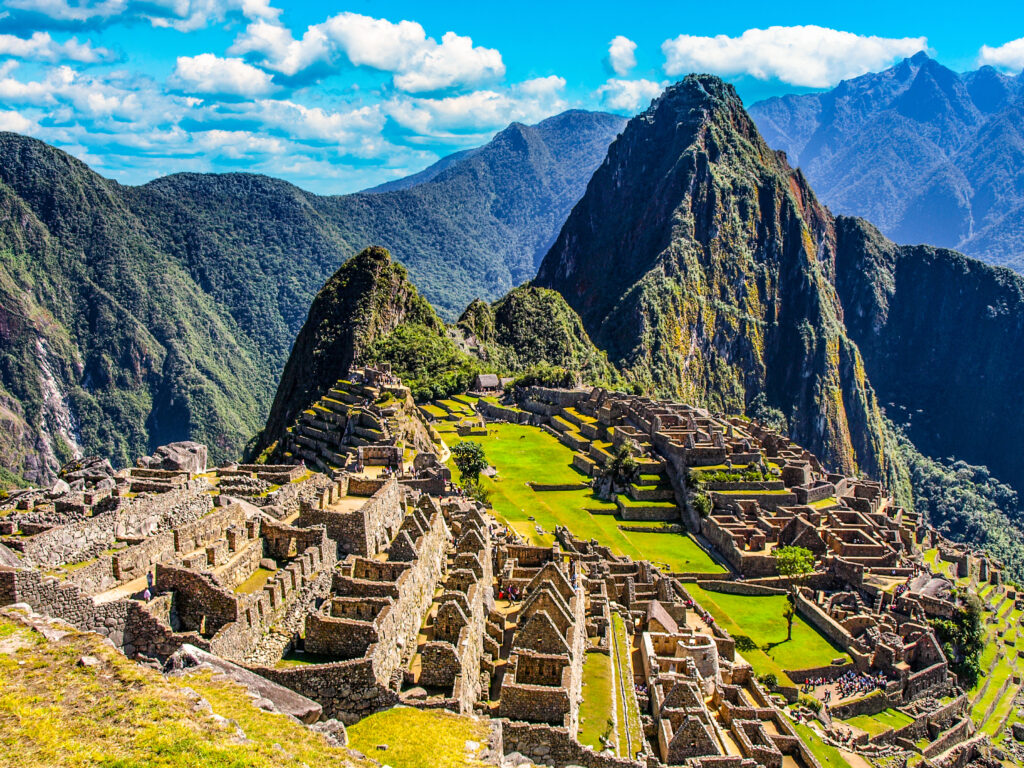By Sahara Al-Madi
For December’s language of the month, I felt it was important to express appreciation for Kichwa/Quechua.
Kichwa is an agglutinative language with SOV word order that has been spoken in the Andes region of South America long before the Inca Empire. It currently has an estimated speaking population of nearly eight and a half million people. Speakers of this ancient Andean language can be found in Colombia, Bolivia, Ecuador, Peru, Chile, as well as Argentina. Its origin is relatively unknown. A major source for historical linguistic data relies on the strong oral tradition of the Incan empire. During the occupation of the conquistadores in the sixteenth century at the Andean coasts of South America, there began to be written linguistic documentation on Kichwa. The first known books on the grammar of Kichwa were noted from 1560 by the Sevillian, Fray Domingo de Santo Tomás. There were many observations by “El Inca,” Garcilaso de la Vega such as Comentarios reales de los Incas e Historia General del Perú. In 1987 there was an estimate of twenty-three different dialects of Kichwa. There is still further research that needs to be done with locals in order to determine exactly how many dialects there are and in what regions they were and are currently spoken.
There are currently two main fields of thought regarding the origin of Kichwa. There is the highlands-origin hypothesis, which supports the idea that Kichwa originated in Cuzco, Peru and from there was spread to the rest of the Inca empire. There is also the coastal-origin theory, which supports Kichwa’s origin being of the northern coasts of Peru. According to this theory, Kichwa spread from the coasts to the highlands, even before the arrival of the Inca people. Linguists maintain these theories in mind when considering the many variations of Kichwa. Ethnologue lists 45 varieties of Kichwa/Quechuan, divided into two groups: Central and Peripheral. They are listed as separate languages. There is no consensus on what constitutes a standard. This leads us to the question: were these sound systems native to both, in a common ancestor?
A closer phonetic observation of Kichwa’s sound system helps us discover that only Cuzco/Bolivian Quechua currently contain ejectives. This phenomenon is observed in the Cuzco/ Bolivian Kichwa which is the dialect bordering Aymara. The Ecuadorian Kichwa dialect has something in common with the Cuzco dialect. These two dialects both contain aspirates despite these speakers being located thousands of miles from where Aymara is spoken today. A difference noted between these two is that the lexemes with aspirates in the Ecuadorian variety do not correspond with the lexemes with aspirates in the Cuzco variety. Central Kichwa dialects have been noted to neither contain aspirates nor ejectives. There is opportunity for a deeper analysis of the regional variation in the phonology of Kichwa. Another fascinating topic to dive into is Sivia sign language which is lexically unrelated to Peruvian sign language.
Sivia, also known as LSSiV, is a sign language native to Sivia, Peru, used by a small population of deaf and hearing people within a Kichwa community. According to University of Hawaii at Manoa’s Brenda Clark, LSSiv uses relatively few distinctions in handshape and handedness, placing more importance on locative and non-manual features. Some free variation patterns lead to the proposal of an open feature for handshapes, and orientations are considered to be largely morphological. Both of these are presented as topics for further investigation. Current research on LSSiv signs are broken down according to the typical categories of handshape , orientation, location, movement, and non-manuals. The study by Clark notes the possibilities observed thus far and was conducted through the consensual study of 12 native signers and 38-50 additional users in the town of Sivia, located in the VRAEM region of Peru. It is hypothesized that the language originated approximately 50 years ago and is now used by two generations of deaf and hearing people. LSSiv is also considered to be endangered due to low user numbers and a lack of institutional support or recognition.
Kichwa, or Quechua, is a fascinating language with a deep rooted history expanding beyond the Incan empire. The mysteries of its origin continue to be debated by scholars today and linguists have an ample opportunity to research sound systems as well as its sign language. I hope that this month’s article may have sparked an interest so that you may enjoy your journey in discovering more about Kichwa. I have provided resources for you below.
Links to explore further:
Grammar 1: Pronunciation and phonetics
https://lingweb.eva.mpg.de/quechua/Eng/Sounds/Quechua/QuechuaOriginsAndDiversity.htm
https://linguistics.byu.edu/classes/Ling450ch/reports/Quechua1.html
http://ling.hawaii.edu/wp-content/uploads/Clark_Brenda-Dissertation-Draft.pdf
Resources
Carrion, B., et al. (2008). Shimiyukkamu = Diccionario : Kichwa-español, español-kichwa. Retrieved from https://searchworks.stanford.edu/view/8597308
Clark, Brenda R. A Grammatical Sketch of Sivia Sign Language. Diss. University of Hawaiʻi at Mānoa, 2017.
De La Torre, L. M., Et al. (2009). Kichwa Yachakukkunapa Shimiyuk Kamu Diccionario. Retrieved from: https://educacion.gob.ec/wp-content/uploads/downloads/2013/03/RK_diccionario_kichwa_castellano.pdf
Quichua of Imbabura: A Brief Phonetic Sketch of Fricatives. (2012). Retrieved from: http://www.macrothink.org/journal/index.php/ijl/article/viewFile/1474/pdf
Waskowsky, S. P. (1990, December). The phonology of Salasaca Quichua.
Retrieved from:https://www.researchgate.net/publication/34831106_The_phonology_of_Salasaca_Quichua_microform

